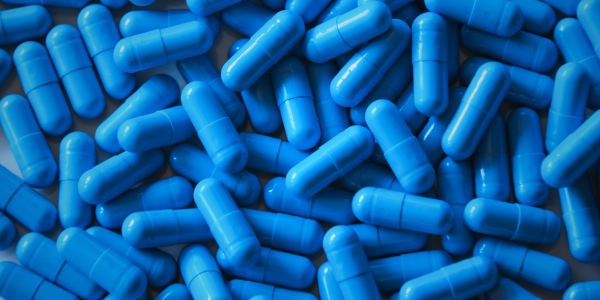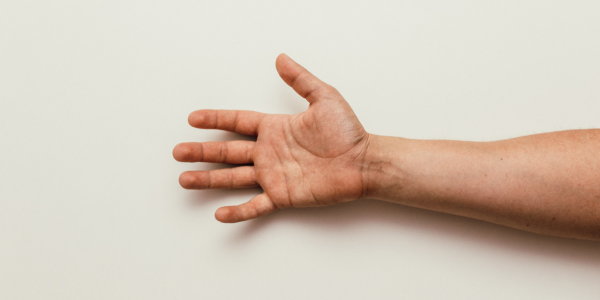
What are Anabolic-Androgenic Therapies?

There’s an increasing interest in emerging anabolic-androgenic therapies. This interest stems from treatments that help manage hypogonadism, or low Testosterone in men.
Testosterone is one of the most well-known anabolic hormones, and it is often used to treat low Testosterone. However, there are several other anabolic hormones that have been used in medicine to treat various conditions. In fact, many of these hormones have been studied and used safely for decades.
Andrologists are medical doctors and researchers who are considered experts in modern androgenic therapies. This includes the use of androgenic hormones like Testosterone to treat common Men’s Health issues.
In addition to treating hypogonadism, the Andrology community reports exciting evidence showing that certain anabolic hormones can improve fertility in sub-fertile men who also have low Testosterone.
Evidence is also beginning to show that there are other applications for these hormones relating to conditions that often occur simultaneously with low T.
For example, these hormones show anecdotal promise in treating sexual dysfunction in men and women, which is often a symptom of hormone imbalance.
Certain anabolic hormones are known to accelerate healing and recovery following an injury, as well. In addition, providers may prescribe these hormones due to their positive effect on body composition, which can result in more lean tissue (muscle) and faster decrease in body fat. Changes in body composition and fat gain are often symptoms of low Testosterone in both men and women.
Of course, patients typically welcome the aesthetic benefits of improved body composition – but what is really exciting to see are the positive health outcomes that result from body composition changes, including improved metabolic health.
What does “Anabolic-Androgenic” Mean?
Anabolism is a growth process in the body. It refers to the creation of new bone, tissue, and muscle. Anabolism is extremely important in wound healing and recovery. It’s also an important factor of body composition.
Physiologically, increasing anabolic activity can change a person’s body composition. It does so by increasing muscle and bone density while also accelerating fat metabolism – all of which result in body fat reduction.
Androgenic refers to a hormone’s ability to promote sexual characteristics including body hair, genitalia development, and sex drive, among other things.
Anabolic-Androgenic hormones describe the sex hormones that display both characteristics.
For example, Testosterone is equally balanced between anabolic and androgenic effects (a 1:1 ratio). This means it supports tissue repair and equally supports the development of sexual characteristics. The anabolic effects of Testosterone include increases in skeletal muscle mass, strength, and exercise recovery.
There are other hormones similar to Testosterone but with a much stronger anabolic potential, making them more focused on tissue repair while being less androgenic (for example: more muscle growth but less body hair growth).
These anabolic hormones have been used in medicine for various purposes, including:
- The treatment of hypogonadism and other hormone deficiencies
- Wound and surgery recovery
- The reversal of sarcopenia resulting from age or another condition (Sarcopenia is the loss of muscle and increase in fat mass that leads to a multitude of health issues and risks. It can be cause by aging, chronic health conditions, lifestyle behaviors, and other factors.)
- Treatment for chronic joint pain
Types of Anabolic-Androgenic Therapies
Oxandrolone
Oxandrolone is available in capsule or tablet forms and can be taken orally. It has high anabolic potential with low androgenic potential. This means Oxandrolone focuses on body composition and metabolic health, with less activity around sex characteristics and other androgenic functions.
Recently, there has been more use of Oxandrolone for Hormone Replacement Therapy, Men’s Health, and age management. Compounding pharmacies offer Oxandrolone in custom strength capsules for these uses, including low dose options for women.
Oxandrolone was first approved for use in 1964 and is a modified form of dihydrotestosterone (DHT). DHT is a hormone that is essentially created from Testosterone and responsible for supporting sexual characteristics (androgenic) and functions.
Many of the effects associated with Testosterone come from DHT activity. Although Oxandrolone looks similar to DHT, it has different effects that make it unique when compared to Testosterone or dihydrotestosterone.
Up until now, Oxandrolone has been primarily used to treat conditions that result in significant negative changes in body composition. These include loss of muscle, decreased bone density, and increase in body fat. Conditions that cause these changes include HIV wasting, post-surgery weight-loss, long term corticosteroid users, sarcopenia and any disease that results in unintended weight loss.
Oxandrolone has been used for many years to improve survival and quality of life in patients with chronic illness, trauma, and age-related illness.
Nandrolone
Nandrolone has strong anabolic potential but with even less androgenic activity than Oxandrolone. Emerging evidence has shown that Nandrolone can be used to successfully treat joint pain in men. Subcutaneous injection is the most common delivery method, but some doctors prescribe a compounded topical cream for patients who wish to avoid injection.
Nandrolone was discovered in 1950 and has been used in medicine since the early 1980s. Like Testosterone, it cannot be taken orally due to how its metabolized.
Nandrolone has similar uses as Oxandrolone, but each can have slightly different effects. This allows for more options depending on the patient’s condition and individual needs.
Until now, Nandrolone has been used to treat conditions that lead to degeneration and/or wasting. These include renal failure, anemia, osteoporosis, and HIV/AIDS.
Physicians who treat orthopedic and sports injuries have also long used Nandrolone to help accelerate healing and to treat pain, often with more success than conventional pain management.
Urologists who specialize in the field of Andrology have also reported growing use of Nandrolone as an adjunct to Testosterone Replacement Therapy to help men improve body composition and decrease the risk of type-2 diabetes.
These reported uses are echoed in many different medical specialties who work with Hormone Replacement Therapy and Men’s Health. It has been long used in the HRT to improve life quality and reverse the physical effects of age-related metabolic conditions.
Stanazolol
Stanazolol is another oral anabolic hormone like Oxandrolone. Some doctors report slightly more effect in certain areas with Stanazolol, particularly to treat sexual dysfunction.
There is also an increasing number of Women’s Health doctors prescribing low dose Stanozolol for female sexual dysfunction (FSD). It is typically prescribed as a topical cream for vaginal application.
Several compounding pharmacies make Stanozolol cream for scrotal and vaginal application for patients suffering from conditions resulting from sexual dysfunction. This type of approach is often utilized by modern physicians who have tried conventional therapies that failed to help.
Stanazolol has also been used to treat hereditary angioedema and wasting disease. Some prescribe it to support positive body composition changes similar to Oxandrolone.
Despite its potential usefulness, Stanazolol appears to be less known than other more commonly prescribed Anabolic-Androgenic therapies.
Other Anabolic-Androgenic Hormones
There are many other Anabolic-Androgenic hormones that have been studied and used in medicine since the 1930s. As supporting evidence and clinical interest continues to increase, pharmaceutical companies and compounding pharmacies have been creating more options for providers and patients.
Anabolic-Androgenic Therapies Show Promise
In conclusion, Anabolic-Androgenic therapies like Nandrolone and Oxandrolone appear to be effective and safe hormone treatments for age-related (or otherwise) body composition changes and metabolic health issues. They also show promise in treating pain and helping with injury recovery.
Oxandrolone is often used as an adjunct to Testosterone Replacement Therapy in patients who need more androgenic support than Testosterone alone. This includes patients with low levels of DHT, which is sometimes caused by using the hair loss treatment Finasteride (sometimes called Post-Finasteride Syndrome).
Oxandrolone can also be useful for patients who have high levels of Sex Hormone Binding Globulin (SHBG), or patients who produce too much Estrogen, which can lead to suppressed Testosterone levels (a negative Estradiol to Testosterone ratio). Oxandrolone improves the amount of “free Testosterone” in addition to more androgenic activity along with the Testosterone, often improving erections, arousal, and mood.
We’re in an exciting era with access to new technologies, pharmaceutical innovation, and progression of clinical knowledge. This allows physicians to create a hormonal environment that shifts the body to an anabolic state and helps treat some of the most common conditions that progress with age, poor lifestyle habits, injury, and disease.
These hormones can make a positive impact on patients’ quality of life and ability to survive.

Anabolic Therapies with Defy Medical
Anabolic hormones can be used safely to treat some of the common conditions that decrease quality of life and survival. This treatment can be used to encourage healing and regeneration, support healthy body composition, treat joint issues, and more.
Defy Medical offers individualized Anabolic-Androgenic Therapies based on your needs and goals.
Ready to learn more?
Get StartedSources
- Determination That DECA-DURABOLIN (Nandrolone Decanoate) Injection, 200 Milligrams/Milliliter, 1 Milliliter, Was Not Withdrawn From Sale for Reasons of Safety or Effectiveness. The Federal Register.
- Taylor WN (2002). Anabolic Steroids and the Athlete (2 ed.). McFarland. p. 180. ISBN978-0-7864-1128-3. Archived from the original on September 14, 2016.
- Bhasin S, Storer TW, Berman N, Callegari C, Clevenger B, Phillips J, et al. The effects of supraphysiologic doses of Testosterone on muscle size and strength in normal men. N Engl J Med. 1996;335: 1–7
- Wu C, Kovac JR. Novel Uses for the Anabolic-Androgenic Steroids Nandrolone and Oxandrolone in the Management of Male Health. Curr Urol Rep. 2016 Oct;17(10):72. doi: 10.1007/s11934-016-0629-8. PMID: 27535042
- FDA-Approved Drugs: Oxandrolone. 2021.
- Tatem AJ, Holland LC, Kovac J, Beilan JA, Lipshultz LI. Nandrolone decanoate relieves joint pain in hypogonadal men: a novel prospective pilot study and review of the literature. Transl Androl Urol. 2020 Mar;9(Suppl 2):S186-S194. doi: 10.21037/tau.2019.11.03. PMID: 32257859; PMCID: PMC7108994
- Pan MM, Kovac JR. Beyond Testosterone cypionate: evidence behind the use of Nandrolone in male health and wellness. Transl Androl Urol. 2016 Apr;5(2):213-9. doi: 10.21037/tau.2016.03.03. PMID: 27141449; PMCID: PMC4837307


